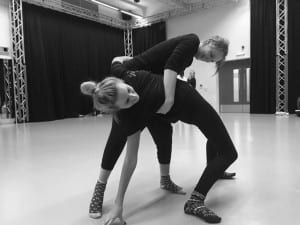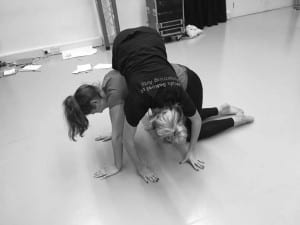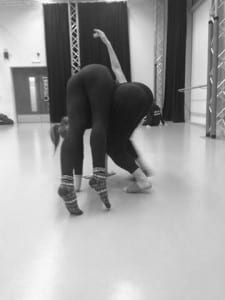This week mainly focused on preparation for the open studios where we would be performing our scores to an audience. Whilst trying out our score we decided to make some slight adjustments. We had included an element of chance in our score, leaving the audience to pick a number between one and ten. This number would determine if we were to start on the floor, or standing, and would also determine how many people we had to dance with before leaving the space. It had worked previously when we had tried out our score, but there was a specific time when we were all given high numbers. This meant for the audience that there was too much to look at and it prevented us from being able to use the corridor, as there were more than two people left in the space. To overcome this issue, we adjusted what we would ask the audience. Half of the group would ask for a number between one and five, and half between five and ten. This would ensure that our numbers were slightly more varied. The other adjustment which we made was getting rid of the variation of speed from our score. We had planned to always go slow on a low level and fast standing up, but it appeared to be too challenging and limited the use of lifts.
Overall, I am really happy with the progress I have made throughout the module. In the open jam there was a particular moment when I was working with Chloe and I managed to pull her from the ground and catch her round my waist without any problems. Before this module, I would not have trusted myself to catch her, but I have realised that you have got to take chances and that confidence is probably one of the most important factors. If you don’t feel comfortable, the likelihood is that it will not be successful, but if you have confidence, it is likely that it will be reflected in your work.




